In past months, I’ve reported about the Gulf Fritillary, Agraulis vanillae, butterflies and their procreation through the fall/winter months. Recently they’ve intensified production of their population. Many caterpillars, like this one, are currently feeding on my Common Passion flower vine, Passiflora caerulea.
Feeding voraciously means that caterpillars grow. And grow. Eventually, they’re so big that they must find a place to be, to attach, to sequester themselves in place to prepare for their adult life of winging among the flowers.
I wonder how a caterpillar decides where to stop, spin its anchor, and begin its process?
Near to the caterpillar-munched vine, hang individuals–former caterpillars, future butterflies–in varying stages of metamorphosis.
In the above shot, the two at far left are empty, having disgorged their winged adults, who are now presumably out-and-about, nectaring and finding mates–and not necessarily in that order. The blurred ones in the distance hang solemnly while important chemical work happens within their protective walls. The one in the center is probably a newby chrysalis; some of the spiny qualities of the former caterpillar are still attached, not yet sloughed off. The caterpillar leftovers on that chrysalis reminds me of one of those intricate, odd hats donned for horse races and other such fancy events that I’m unlikely to ever attend.
Bat-like visages, butterfly chrysalises are often hard to spot and that’s best for the survival of the insects during the vulnerable morphing stage. In the case of this little colony, there were quite a few attached to the underside of relatively flat ceramic bird bath, which sits atop a trellis post (hosting the passion vine) and at my eye-level. It’s an obvious choice for a morphing spot, safe from prying eyes, except for the gardener’s, who doesn’t view them as a meal.
In these past days, I’ve been extra careful as I deadhead this spring’s magnificent crop of Spiderwort, which are wrapping up their flowering and ramping up their seed production. I’ve got plenty of Spiderwort, thank-you very much, and they must be pruned so that there aren’t scads more next spring. I look twice before I snip, so that the evolving critters attached may continue their journey.
There’s always the comedian in the crowd, too. What was this one thinking? Maybe it was attempting prove that she/he could hold it for the duration of its transformation.
Just beyond that perpendicular, yoga-like position, one hangs from a different human construction, its neighbor connected to a stem. Both content, hopefully safe.
I don’t know which I prefer: to observe (usually over the course of a few days) as a caterpillar morphs to a chrysalis,
…or to bear witness when the new form emerges, or has just emerged.
Both are awesome.
If I were a butterfly, this is where I would choose my rebirth,
…if for no other reason than to add beauty to the garden.
This chrysalis, nearby to both butterflies and empty, was probably the temporary home for one of the butterflies as it transformed from worm to wings.
Chrysalises, still and quiet as we see them, but churning with change and alive with possibilities, are remarkable salutes to the continuation of life and acceptance of situation.
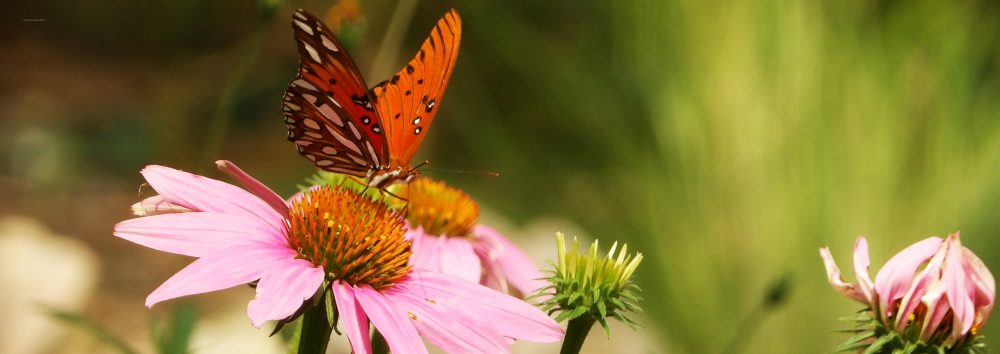

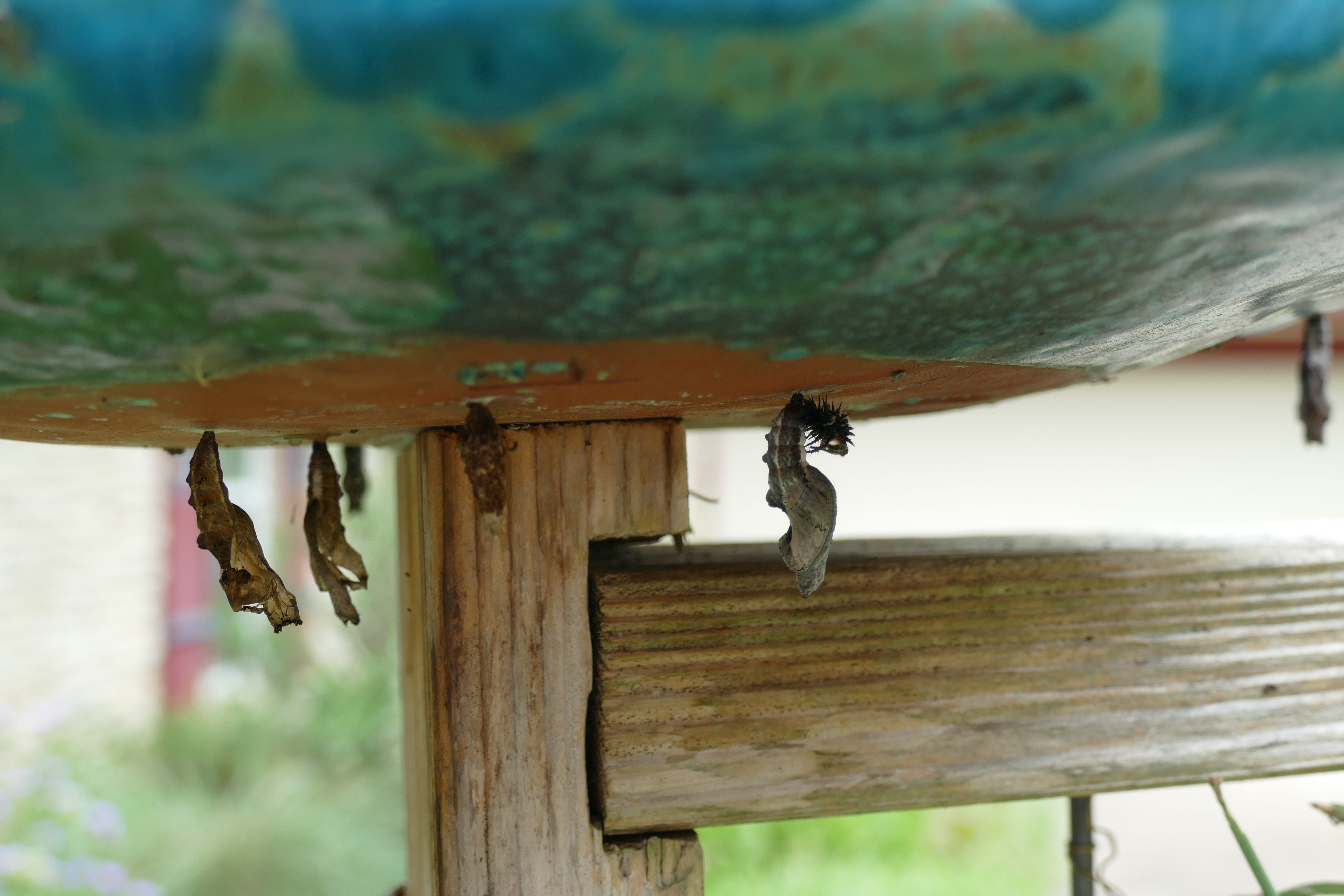

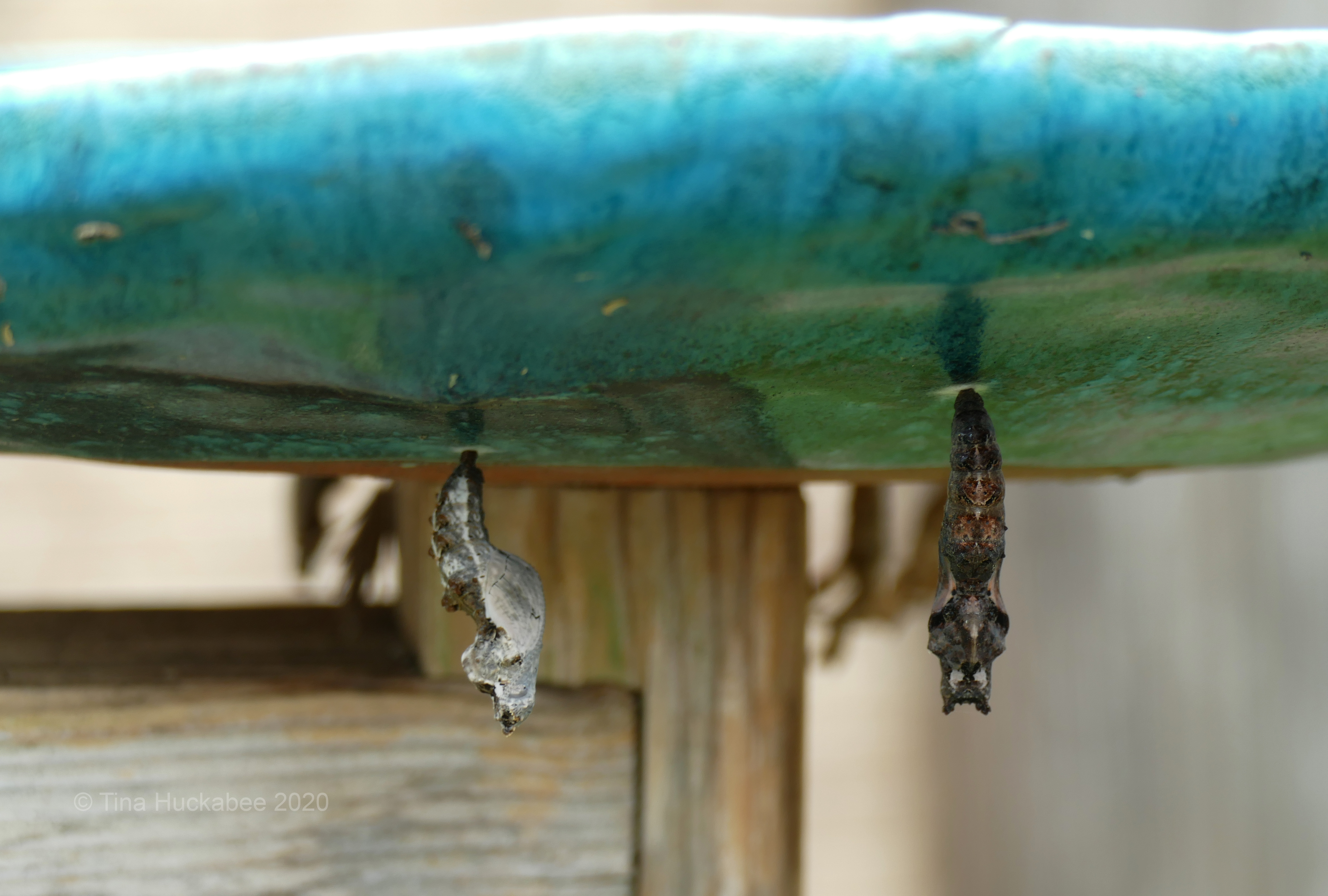
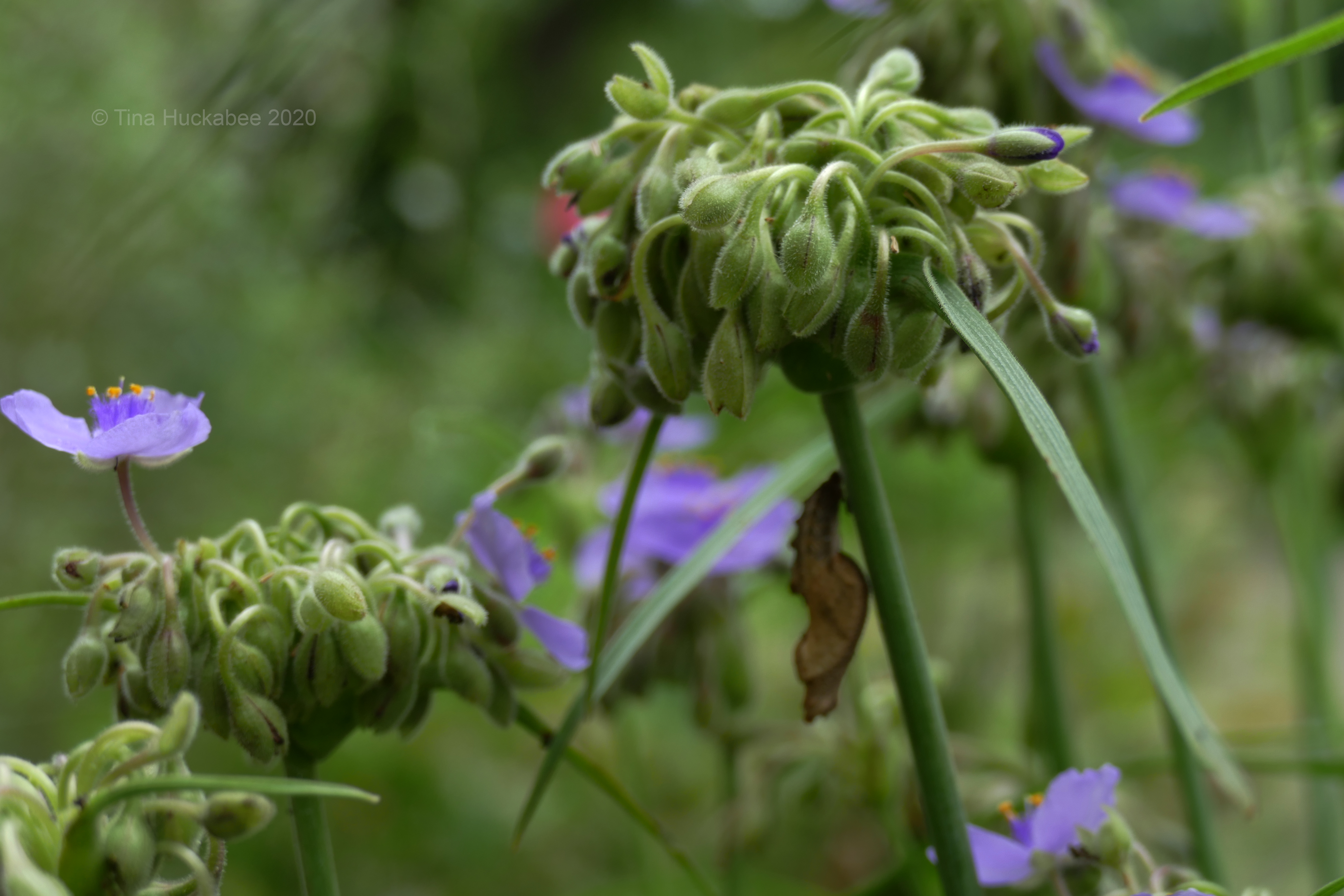
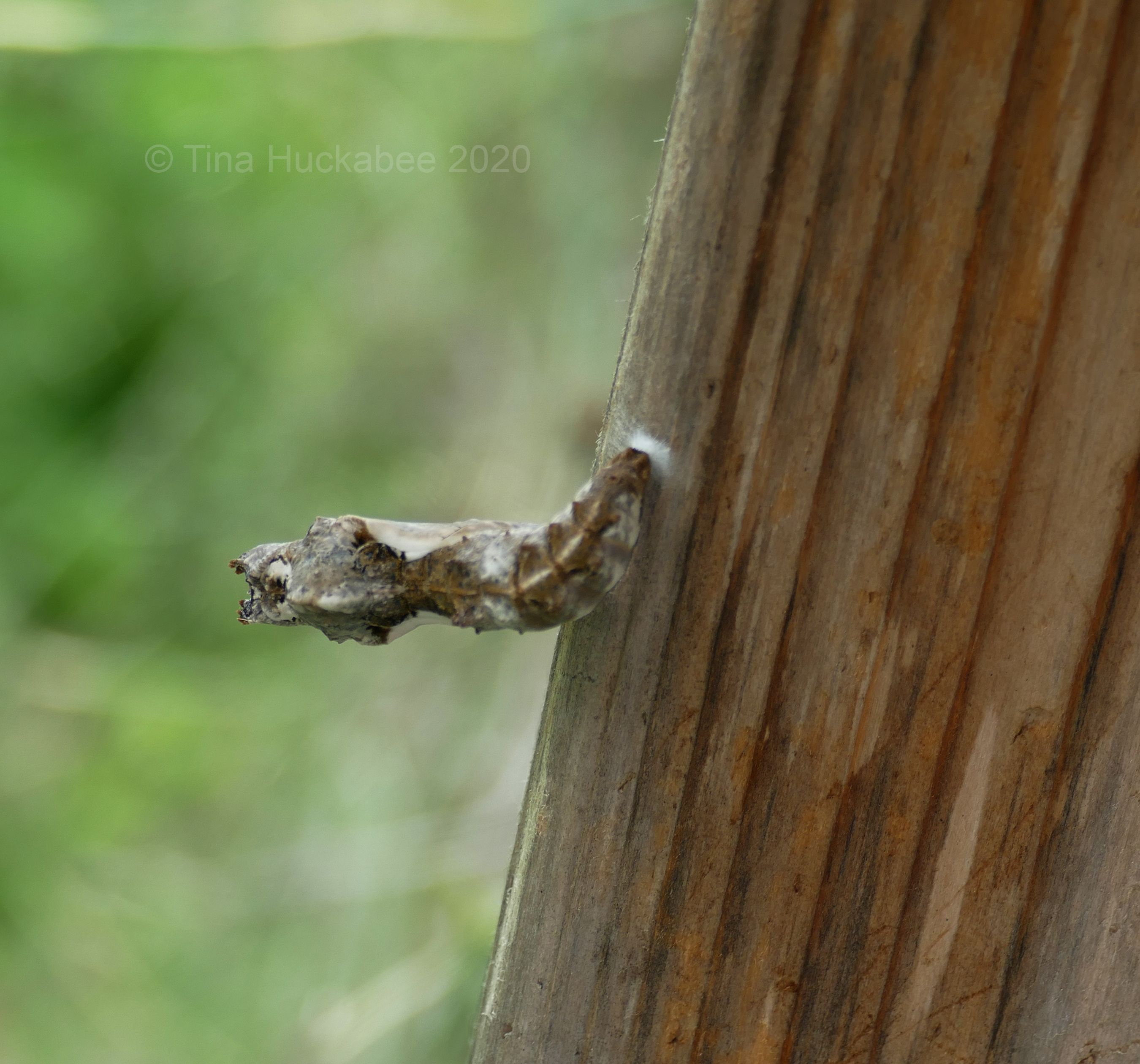
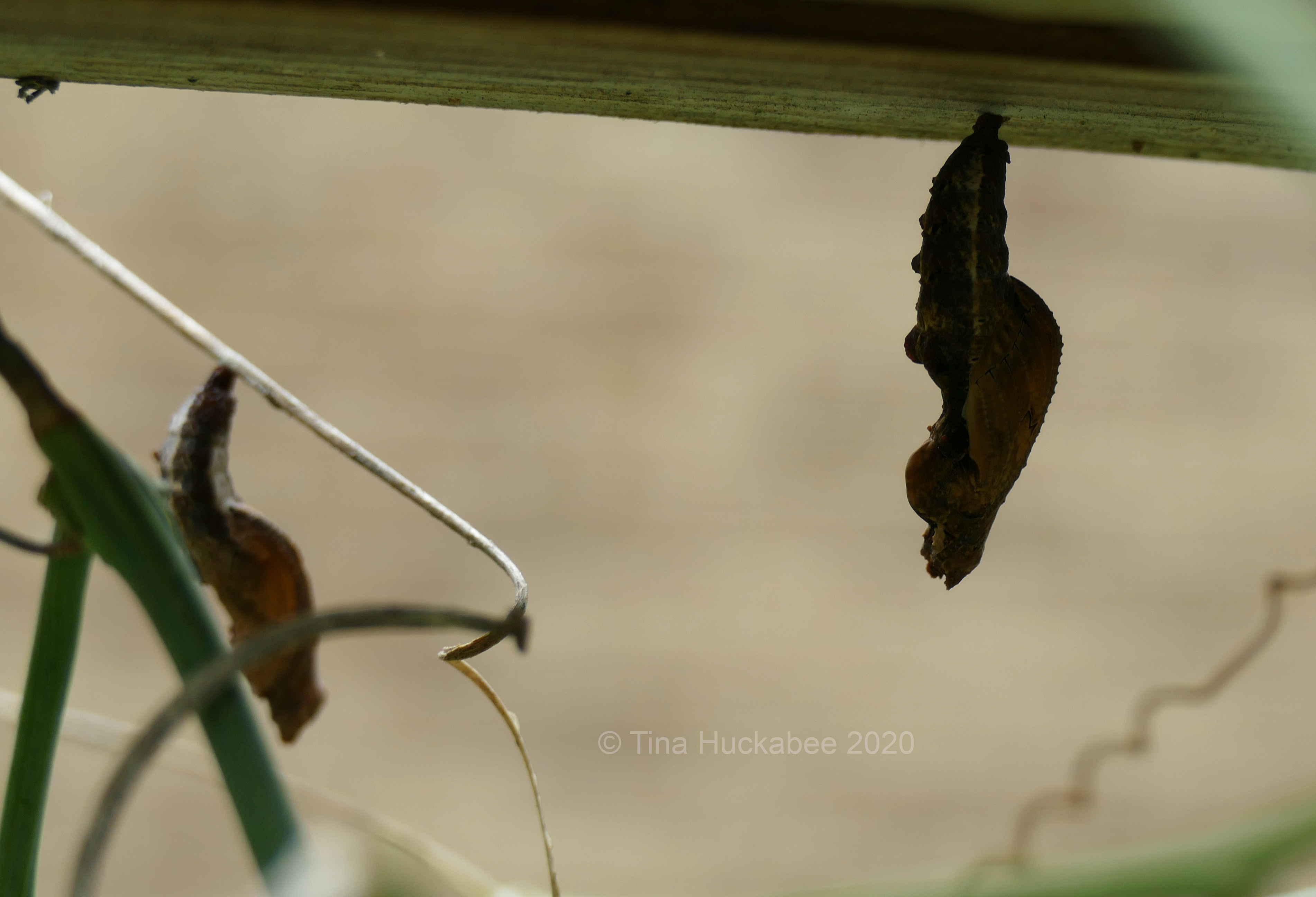
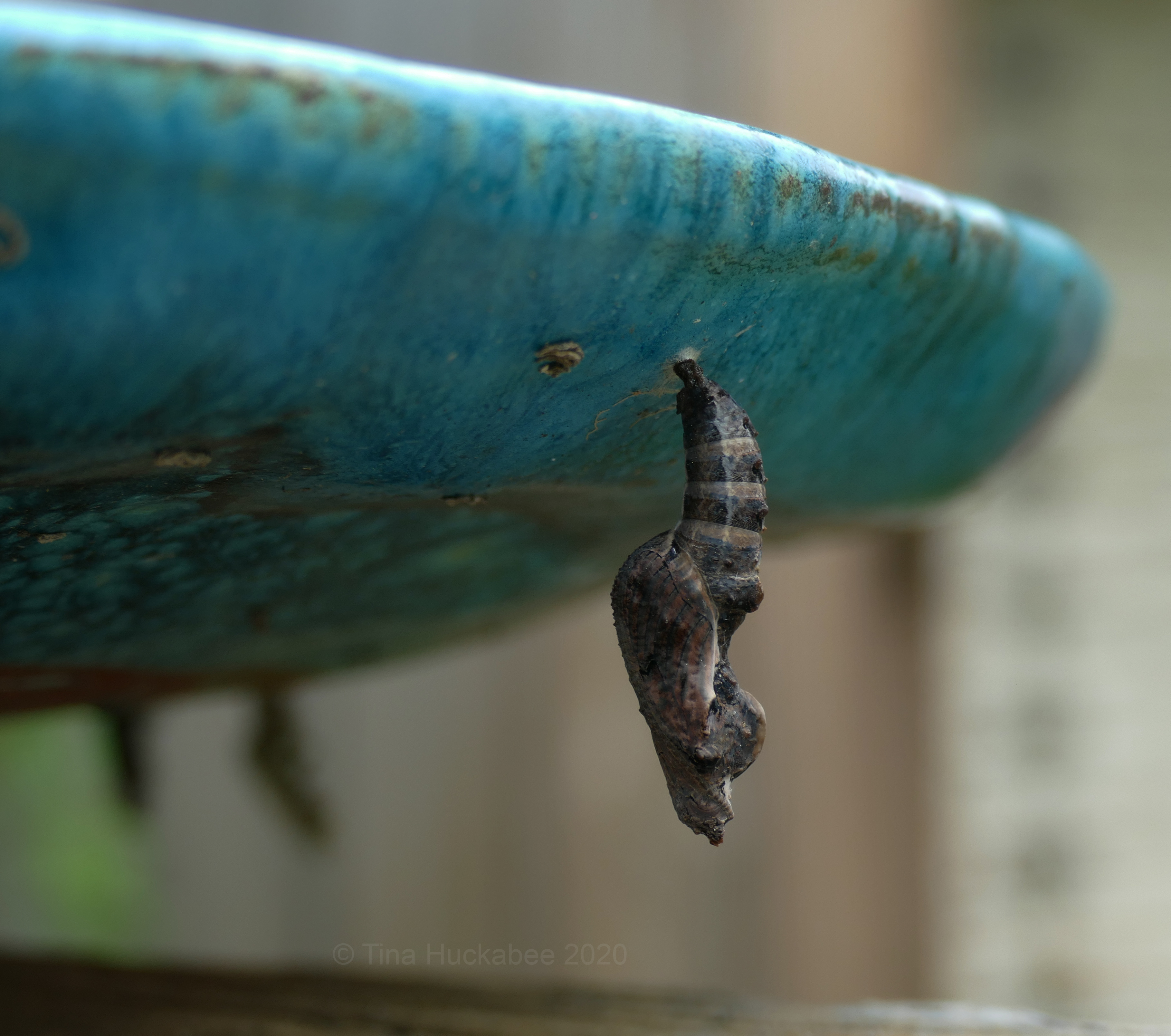

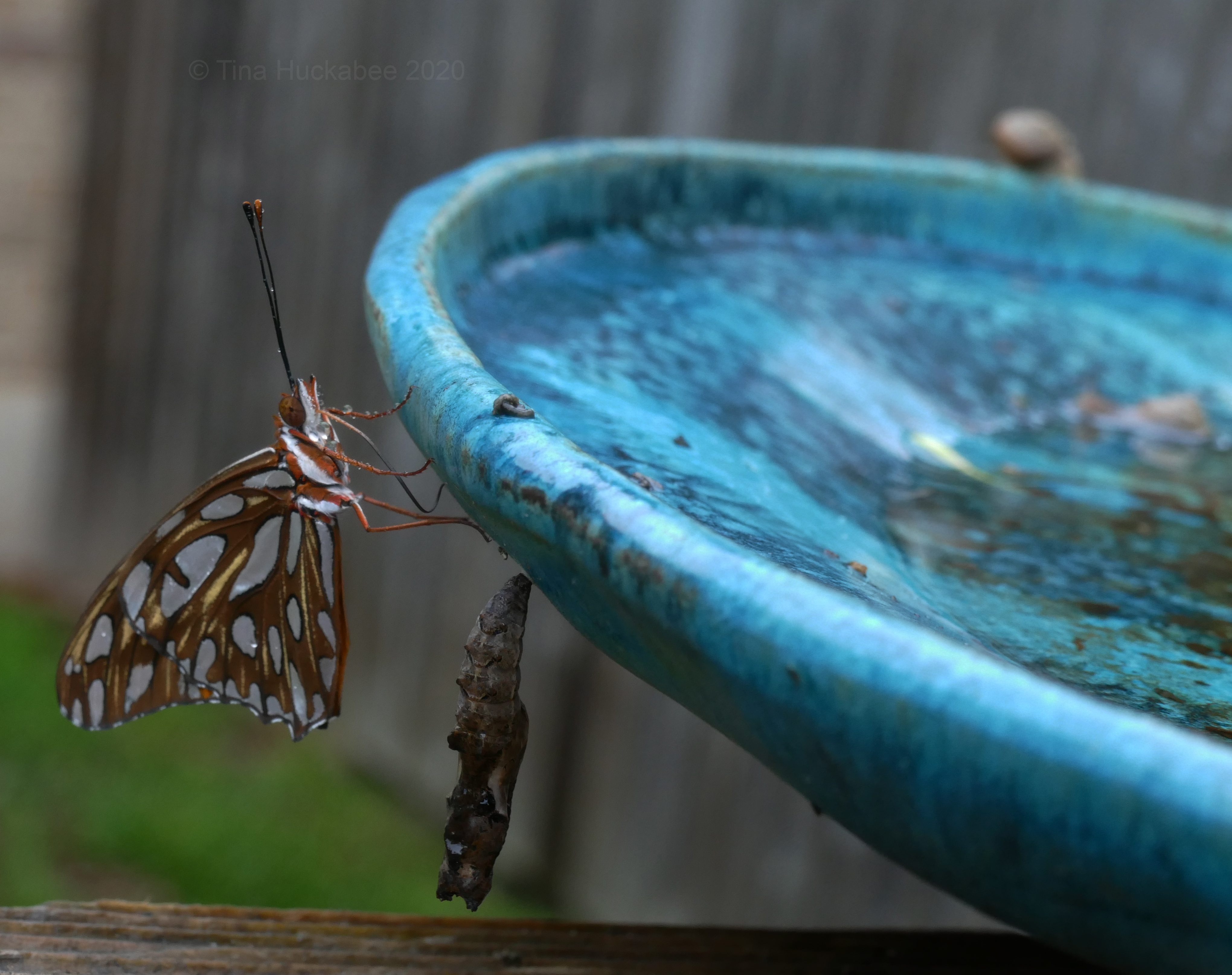


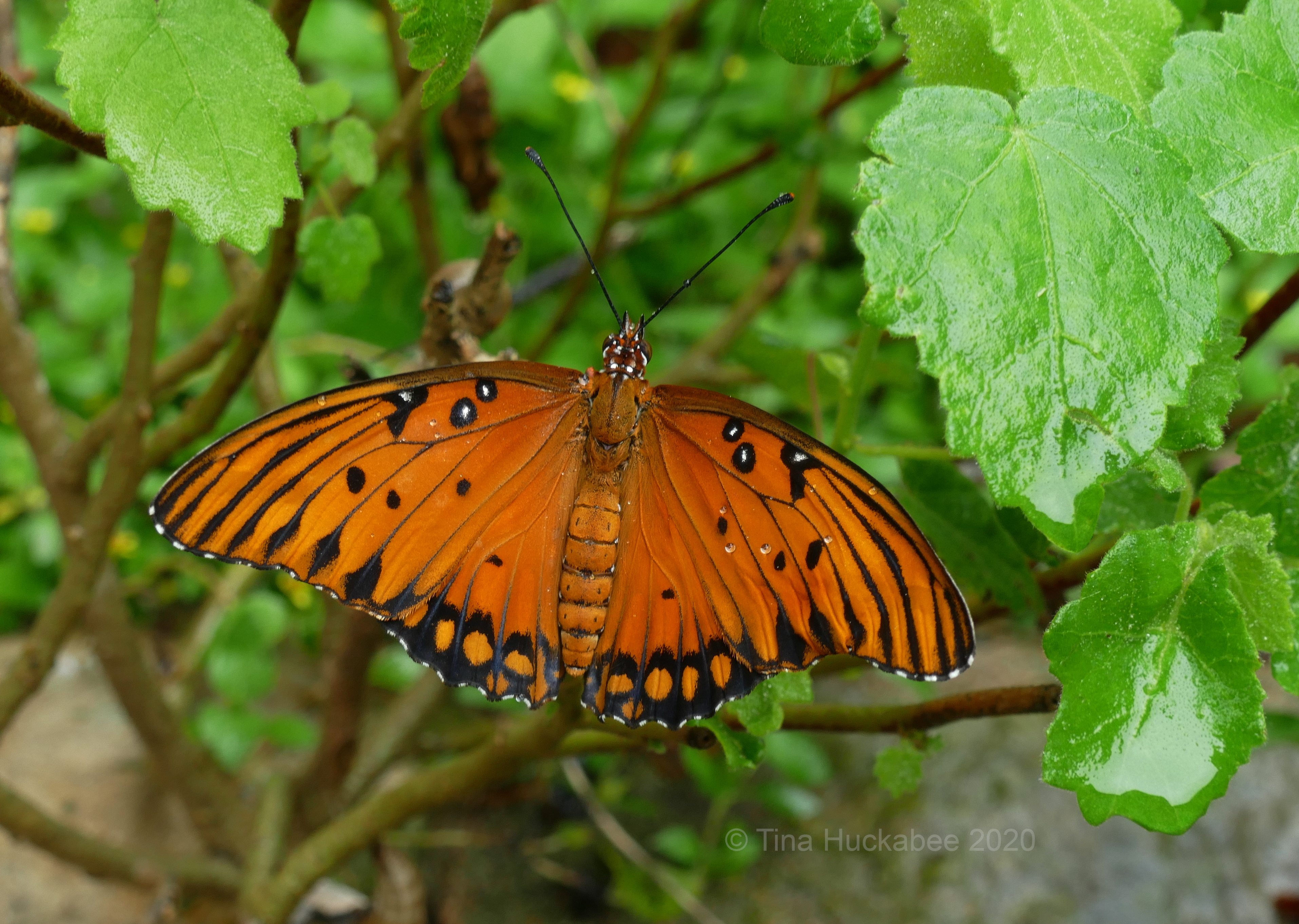

I see what you mean about the hat shape. What a marvelous miracle of nature to witness!
LikeLike
Yes, I just love watching this show!
LikeLike
How amazing to witness a new butterfly! Lovely photos Tina.
LikeLike
Thanks, Sue. It really is a privilege to observe these creatures.
LikeLiked by 1 person
A fabulous post, what a joy to see these beauties emerge from their miraculous transformation.
LikeLike
Thanks, Chloris! Joy is a good word for this process!
LikeLike
What a great shot with the butterfly next to its chrysalis. I can’t believe how many you were able to find. I bought a new passion vine and hopefully it is the kind that the Fritillary will like.
LikeLike
I’ve never seen so many, Judy. And just this morning, there’s a cat, gone into “J” formation under the ceramic plate–new pupa on the block!
LikeLiked by 1 person
It looks like it will be a good year for butterflies. I have so many Monarch caterpillars right now.
LikeLiked by 1 person
Tina you have many caterpillars that will become Agraulis vanillae although now they are eating all your beautiful Passiflora fall. I am fascinated by the metamorphosis they undergo in their pupae: a caterpillar becomes a divine butterfly. I had never noticed that pupae look like bat faces! A butterfly just out of its chrysalis: what wonderful photos, they are extraordinary. Tina your wonderful garden is full of wildlife everywhere: it is your refuge. Fantastic! Stay safe and positive thoughts. Loving greetings from Margarita.
LikeLike
Yes, Margarita there are lots and lots of caterpillars and beautiful butterflies! The garden has been a refuge for me and I’m so grateful for the space, beauty, and continuation of life. You also be well and take care of yourself!!
LikeLike
The process of caterpillars turning into butterflies never loses its wonder for me – thank you for this post and beautiful pictures. I love Gulf Fritillaries so much! I’ve noticed that their chrysalides will start off hanging straight and then swing to one side, kind of like the one you photographed doing chrysalis yoga. I wonder why they do that? Are they just wiggly? Thank you again!
LikeLike
It really is something to behold, this transformation. We all know about it, but when you can watch part or all of it, it’s almost mind-boggling! Interesting about what you’re suggesting about their movement. Pupae do move and especially at the end of the process, but I don’t thing all of mine to that perpendicular thing. I’ll need to watch more carefully, I guess. Poor me. 🙂
LikeLike
Such great photos and info. I haven’t seen a single butterfly yet in my garden this spring but will look closely at plants now. Take care.
LikeLike
Thanks! Maybe yours are just a little sleepy after winter; I hope they show up and in spades.
LikeLiked by 1 person
Fabulous post Tina and stunning captures!
LikeLike
Thank you–hope you’re well and safe.
LikeLiked by 1 person
I just mentioned elsewhere how perplexed I am that I never have found a chrysalis — not once! I’ve decided that gardeners have a better chance, since you plant for butterflies and bees. Clearly, the technique works — butterfly magnets encourage them in every stage, not just the fluttery one!
LikeLike
That makes a lot of sense and especially because the chrysalises are so well camouflaged. I see them because I’ve planted to help produce some of them. But, yes, out in nature, I’ll bet they’d be super difficult to come by.
I have about 20 Gulf Fritillaries in my garden right now and more on the way!!
LikeLike
Wonderful, wonderful photos. I don’t recognize most of these butterflies. But who uses Spiderwort as a host plant?
LikeLike
As far as I’m aware, no one uses spiderwort for anything except the foundation of their transformation. 🙂 Some of my spiderwort plants are in the same vicinity as the passion flower vine, which is the host to the Gulf Fritillaries, thus caterpillars, thus butterflies. 🙂
LikeLiked by 1 person